North Korea intertwined with the US plans
For a long time, North Korea has remained a secretive state. By the end of the World War, the already divided South and North Korea under Japan’s rule resulted in Soviet Union to take over the control of the North and US of the South respectively. Since then, two separate regimes have emerged, the Democratic People’s Republic of Korea (DPRK) in the North under the communist rule of the Kim dynasty, with its first Great Leader Kim ll-sung, second Kim Jong-il and its current Great Leader Kim Jong-Un.
Meanwhile, the announcement of South Korea’s independence in 1948 under the name of Republic of Korea, sparked North Korea’s invasion, leading to the 1950-1953 Korean War¹. Two decades later, a peaceful reunification will be signed between the two separate entities.
North Korea: Back and forth steps over nuclear power
Over the last thirty years, the role of nuclear power for North Korea has been very ambiguous. Back in 1985, North Korea ratified among other countries the Nuclear Proliferation Treaty (NPT) with a commitment to halt the use of nuclear weapons and technologies.
In 1993, North and South Korea reached an agreement to keep the Korean Peninsula nuclear-free, but one year later North Korea warned that it would withdraw from the NPT. Shortly after, the United States attempted to de-escalate the tension and signed an agreement with the Korean leader. Amid a positive climate, the two countries warmed up their relations leading to the relief of the US sanctions imposed on North Korea since the Korean War.
That is until George Bush’s presidency who decided to follow a harder diplomatic line; as a result, the relationship of the two countries deteriorated, when North Korea abandoned the NPT and refused to follow IAEA’s guidelines. Despite North Korea’s decision in 2009 to continue its nuclear programme, the US pressure started to have an impact on the former’s decision making by refraining its nuclear programme in exchange for oil.
Yet, the succession of a new leader in South Korea slowed down the reconciliation heads up while the US-North Korean talks had started deteriorating. After Obama’s inauguration as the new US president, an attempt to normalise the bilateral relations was rebuffed by the ballistic missile program and the construction of a uranium plant in North Korea. To make matters worse, with the rise of a new North Korean leader, Kim Jong-un, the country intensified its nuclear programme. In 2017, after Trump’s inauguration, North Korea was listed as a state sponsor of terrorism from the United States.
Reaching a new point: two historic meetings in 2018
Over recent decades, the US – DPRK relationship has seen many ups and downs. The recent talks between Donald Trump and Kim Yong-un have sent mixed signs to the press.
With no doubt, both leaders follow a hard diplomatic line according to their political agenda and very often make statements with ambiguous messages. For Donald Trump, a Republican president, the leadership and reinforcement of the United States is placed at the centre of his foreign affairs agenda, which deviates from the moderate political steps followed by his Democrat predecessor, Barack Obama. The denuclearisation of regional players including North Korea and Iran is one of his top priorities. Through his public announcements and posts over the social media, the US president has not hesitated to threaten directly or indirectly his North Korean counterpart. On a certain occasion, the US president responded to Kim’s comment by warning him that he also had a nuclear button –even bigger- on his desk ready to press at any point – implying that he is ready to start an atomic war, which has brought back cold war memories. Of course, many experts and analysts have elaborated on the US president’s tweet. On a brief note, it was explained that Trump was not referring on an actual button but rather on a briefcase that always the US president that allows the president to initiate a nuclear attack by targeting a list of locations.
North Korean Leader Kim Jong Un just stated that the “Nuclear Button is on his desk at all times.” Will someone from his depleted and food starved regime please inform him that I too have a Nuclear Button, but it is a much bigger & more powerful one than his, and my Button works!
— Donald J. Trump (@realDonaldTrump) January 3, 2018
For North Korea, nuclear armament is seen as a protective shield against external threats. It is no wonder that the past political choices of the DPRK leaders brought the country to isolation from the rest of the world. An immediate effect was the long-term poverty and hunger that hit its people – after the imposition of the US sanctions as retaliation for its nuclear and missile test activities. For Kim Yong-un, potential denuclearisation of North Korea entails the risk of sharing the same fate with Libya’s leader Muammar el-Qaddafi death shortly after the nuclear disarmament of his country in 2003 and 2004 consequently.
Despite the evident obstacles, positive steps were taken when Trump agreed to meet Kim Yong-un early this year. Amidst annulment rumours regarding the Singapore summit – owing to fears held from both sides² – the historic meeting took place on the 12th of June, which put a common ground towards the denuclearisation of North Korea.
The significance of this meeting has been marked as a huge diplomatic success; for Trump, it would the first US president attaining a mutual agreement to dismantle North Korea’s nuclear programme; for Kim, on the other hand, this meeting would grant him higher respect among his people as the first leader that could restore the North-South Korea relations. Indeed, the two Korean countries have united for the summit and agreed to a formal peace treaty that would also lead to the denuclearization of the Korean peninsula.
Looking ahead: An uncertain future
Following the recent progress made between the US and North-South Korea, the plan for a peaceful and denuclearized Korean peninsula seems to be more promising than ever. Indeed, North Korea’s commitment to close down its nuclear test site at Punggye-RI is considered as the first step towards this direction.
However, the successful delivery of this condition would require the continuous and unobstructed inspection of North Korea’s nuclear site by the international observatory units in the long run. If anything, a potential prohibition to monitor the whole disarmament process would severely undermine the peace process in Korea. In the past, North Korea’s credibility has been damaged by the back and forth commitment to abandon its nuclear vision. It is true that anytime North Korea can undergo the construction of new nuclear sites.
Perhaps, the success of peacekeeping attempts in Korea relies on the following realisation: for North Korea, the deployment of nuclear arsenal plays a deterrent role against any external threats (Gambino, 2018). In order to better understand the above position, Iran stands as a rather insightful example; following Trump’s denouncement on the Iranian nuclear deal³, Iran’s foreign minister expressed his disappointment for the US betrayal; warned other countries to avoid doing business with the United States; left open the possibility that Iran might restart its nuclear enrichment activities in the future.
Onwards, the US negotiating line should adopt a more moderate approach on its foreign affairs. If Trump’s cabinet wishes to restore its diplomatic credibility and sow the benefits of a successful agreement with North Korea, then the focus should be on the reassurance of the DPRK government that its national security and people will not in peril – especially after the abandonment of its long-term nuclear programme.
On the next round talks, both sides will need to make important concessions and outline a clear roadmap for North Korea’s denuclearisation as well as the US commitment providing a long-term financial support plan for North Korea. Yet, there is still a vague interpretation of what the denuclearization means for each side and the progress that has been accomplished so far. For the United States, the Singapore summit is viewed as a triumph that exerted pressure to North Korean commitment for denuclearisation. On the other hand, DPRK considers its own success for reaching an agreement with the US-based on its nuclear capacity as the main diplomatic weapon. What’s more, it is unclear which diplomatic lines shall Trump follow. In the United States and abroad, disgruntled voices raise their concern over the withdrawal of the US forces from South Korea – once a peace agreement is reached between the North and the South.
Photo: Shealah Craighead, Kim and Trump shaking hands at the red carpet during the DPRK–USA Singapore Summit (2018). Source: (Wikimedia) | (CC0)
Footnotes
[1] 1950-1953 Korean War:
After the invasion of North Korea’s armed forces in the South, the UN Security Council denounced DPRK’s activities and called for immediate withdrawal. Of course, the involvement of the US forces was inevitable. The war continued until April 1953 when a truce was resumed; however, an official peace treaty has not been reached even 65 years after cessation of the hostilities (CNN, 2018).
[2] Owing to fears from both sides:
For Kim, a potential agreement could lead to disproportionate conditions demanding from North Korea to unilaterally cease its nuclear programme. For the United States, the risk of failing to reach an agreement with North Korea would weaken Trump’s ability as a president to balance the recent international turbulence – especially after his diplomatic agenda towards Iran and the Israeli-Palestinian rivalry.
[3] Iranian nuclear agreement:
The agreement known as Joint Comprehensive Plan of Action was signed in 2015 between Iran and six major powers including US during Obama’s presidency which ended the twelve-year Iranian nuclear programme in exchange of sanction relief imposed to Iran in the past. In January 2016, the country rejoined the global oil markets under the International Atomic Energy Agency approval.
Bibliography
BBC (2018) North Korea country profile, BBC News, 13th June, Available at: https://www.bbc.co.uk/news/world-asia-pacific-15256929 (Accessed 6th November 2018)
BBC (2018) North Korea profile- Timeline, BBC News, 1st May, Available at: http://www.bbc.co.uk/news/world-asia-pacific-15278612 (Accessed 25th May 2018)
Berlinger J. (2018) North Korea issues nuclear threat ahead of high-level talks with the US, CCN, 5th November, Available at: https://edition.cnn.com/2018/11/05/asia/north-korea-nuclear-talks-intl/index.html (Accessed 7th November 2018)
Borger J. (2018) North Korea must disarm before any economic relief, says Mike Pompeo, The Guardian, 24th May, Available at: https://www.theguardian.com/us-news/2018/may/23/north-korea-latest-news-disarm-for-economic-relief-says-pompeo (Accessed 25th May 2018)
CNN (2018) Korean War Fast Facts, CNN Library, 1st May, Available at: https://edition.cnn.com/2013/06/28/world/asia/korean-war-fast-facts/index.html (Accessed 7th November 2018)
Council on Foreign Relations (2018) North Korean Nuclear Negotiations, Available at: https://www.cfr.org/timeline/north-korean-nuclear-negotiations (Accessed 30th October 2018)
Dehghan S. (2018) Why Europe wants to sidestep US sanctions over Iran nuclear might, The Guardian, 5thNovember, Available at: https://www.theguardian.com/world/2018/nov/05/why-europe-wants-to-sidestep-us-sanctions-over-iran-nuclear-might (Accessed 7th November 2018)
Dill C. (2018) Why North Korea is destroying its nuclear test site, BBC News, 21st May, Available at: http://www.bbc.co.uk/news/world-asia-44168320?intlink_from_url=http://www.bbc.co.uk/news/topics/cywd23g0gz5t/north-korea&link_location=live-reporting-story (Accessed 26th May 2018)
Gambino L. (2018) Donald Trump boasts that his nuclear button is biggest than Kim Jong-un’s, The Guardian, 3rd January, Available at: https://www.theguardian.com/us-news/2018/jan/03/donald-trump-boasts-nuclear-button-bigger-kim-jong-un (Accessed 7th November 2018)
Goldman R. 92018) The ‘Nuclear Button’ Explained: For Starters, There’s no Button, The New York Times, 3rd January, Available at: https://www.nytimes.com/2018/01/03/world/asia/nuclear-button-trump-north-korea.html (Accessed 7th November 2018)
Irish J. and Murphy F. (2018) Iran pressures Europe to speed up plans to save nuclear deal, Reuters, 25th May, Available at: https://uk.reuters.com/article/uk-iran-nuclear-talks/iran-pressures-europe-to-speed-up-plans-to-save-nuclear-deal-idUKKCN1IQ00C (Accessed 26th May 2018)
Landler M. and Sanger E. (2018) Trump Says North Korea Summit May Be Rescheduled, The New York Times, 25th May, Available at: https://www.nytimes.com/2018/05/25/world/asia/trump-summit-north-korea.html?rref=collection%2Ftimestopic%2FNorth%20Korea&action=click&contentCollection=world®ion=stream&module=stream_unit&version=latest&contentPlacement=2&pgtype=collection (Accessed 25th May 2018)
Mason J. and Holland S. (2018) Trumps says ‘We’ll see’ on North Korea summit, to insist on denuclearisation, Reuters, 15th May, Available at: https://uk.reuters.com/article/uk-northkorea-missiles-southkorea-talks/north-korea-casts-doubt-on-trump-summit-suspends-talks-with-south-idUKKCN1IG2ZQ (Accessed 25th May 2018)
Nichols M. (2018) As U.S., North Korea plan to meet, Iran warns against Trump deals, Reuters, 22nd April, Available at: https://www.reuters.com/article/us-iran-nuclear-usa/as-u-s-north-korea-plan-to-meet-iran-warns-against-trump-deals-idUSKBN1HT00X (Accessed 26th May 2018)
Taylor A. (2018) Trump’s North Korea diplomacy quietly stalls, The Washington Post, 7th November, Available at: https://www.washingtonpost.com/world/2018/11/07/trumps-north-korean-diplomacy-quietly-stalls/?utm_term=.ceeee54d9a5c (Accessed 7th November 2018)

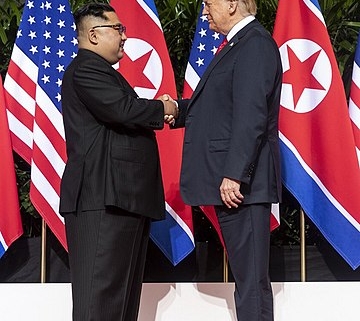
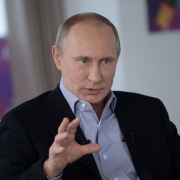
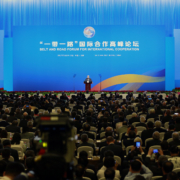
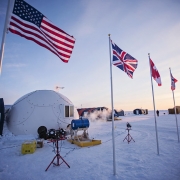 176th Wing Alaska Air National Guard's photostream
176th Wing Alaska Air National Guard's photostream 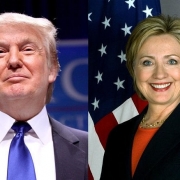
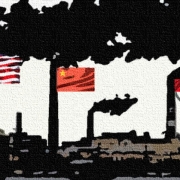



Leave a Reply
Want to join the discussion?Feel free to contribute!